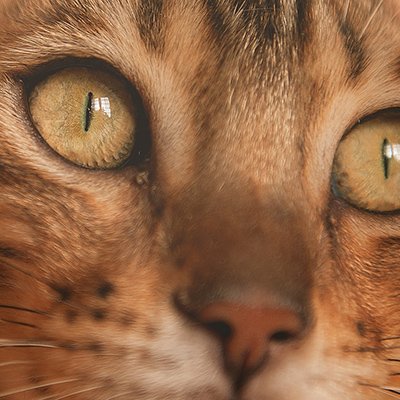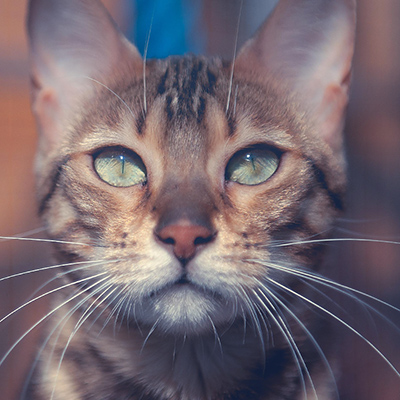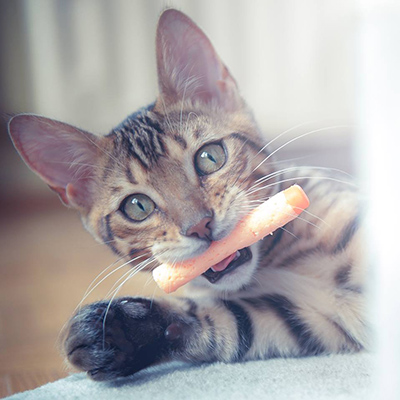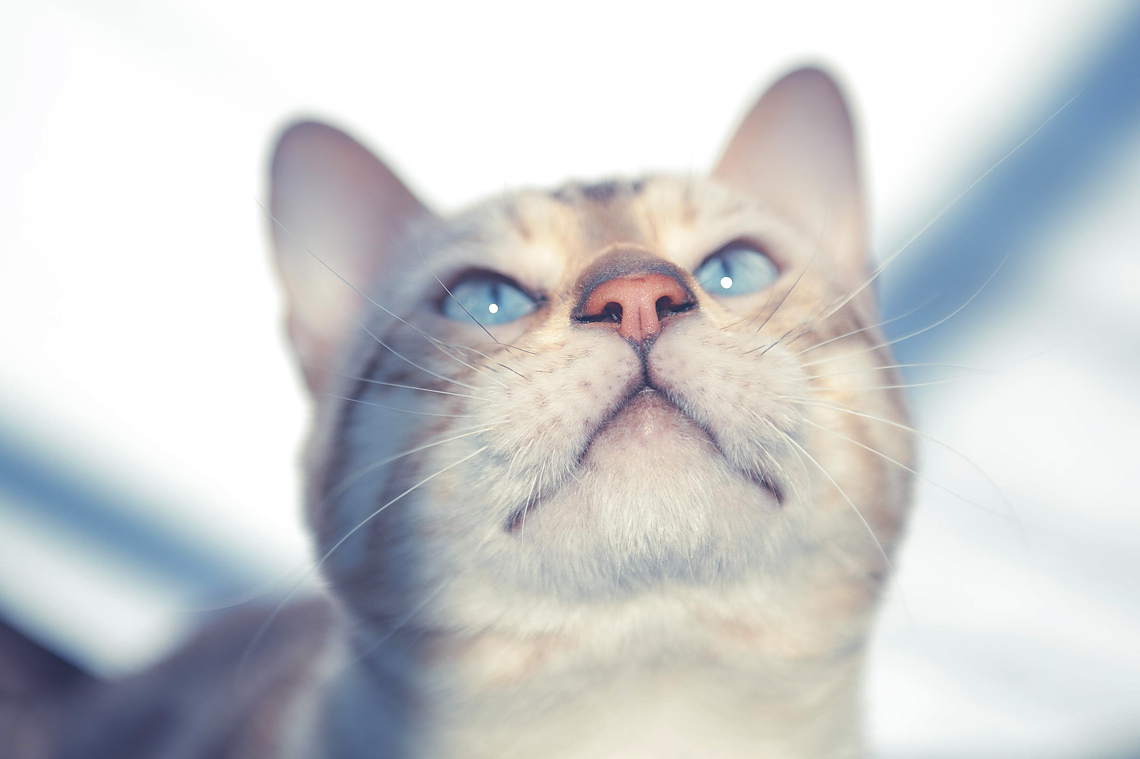When we look into a Bengal’s eyes, we are amazed by their expression, a fascinating mix of wild pride and friendly kindness. In fact, Bengal’s coats and their athletic build are the only thing that really make them wild. Their kindness is nevertheless accompanied by a lot of sparkle. Hence why we are so passionate about Bengal cats!

Wildcats Spirit
Our Bengal breeding is the result of all our know-how
thus guaranteeing you a quality life companion …
Our virtues
Why should you choose us?

Firstly, it is our passion

Taking it seriously
Beyond our pure affection for them, we decided, in 2010, to get into breeding. It was the start of a great adventure… The health of our sires is very important to us and we carefully select their lineage in order to ensure we are completely satisfied with their health, socialization and appearance.

Our guarantees
The health of our high-ranking male and female breeding cats ensure that the Bengal kittens are high quality. We strive to raise them as a family and as soon as they are born, we start handling them so that they become more confident and friendly with humans. Our kittens are taken care of by the vet as soon as they are born. They are then chipped and dewormed. Depending on your choice, they can also be sterilised.
Just to be clear… An animal is not a toy. When buying or adopting an animal, you are
fully aware of the responsibilities involved. Abandoning an animal constitutes an
infringement subject to criminal or administrative prosecutions.
Q&A
What are the differences between a male personality and a female personality? First, it is important to specify that the female Bengal is dominant over the male. The display of dominance is obvious, especially when it is feeding time: the female serves herself first and devours all the best bits. Once fed, they will abandon the food bowl and the male will be able to approach and settle for what is left over. Generally, the female has the most character and is more over the top than the male when it comes to both times of affection and anger. She only has one boss, who she chooses and to whom she remains loyal. The male is generally more docile, a bit more affectionate but also less exclusive with their boss.
The Bengal is not any more fragile than other breeds of cats, quite to the contrary. They have proven themselves to be exceptionally resistant to illnesses. The Bengal breed does not have any advantages over other breeds when it comes to illnesses. Besides, none of the illnesses mentioned below are a prerogative (if we can call it that) of the Bengal breed. The Bengal shares them with their fellow breeds. Of course, reading this section won’t be the best moment of your visit to our site, and after reading it you may be thinking: “We will need a miracle to keep our cat safe from all of these illnesses,”, or worse: “Why bother getting a kitten if it then gets one of these illnesses and maybe dies”. You should also be aware that it is the same for all breeds of animals… Even for humans. However, this doesn’t dissuade us from having children, luckily! These illnesses, even if they exist, only affect a small portion of the feline population. Without becoming paranoid, you just need to learn a bit about it before buying your kitten and get to know the main illnesses that the Bengal breed are susceptible to. That way, you will be able to check your breeder has taken the necessary steps to ensure that the cats can protect themselves. In fact, a serious and responsible breeder will make sure they take all the necessary precautions in order to protect these breeding cats from illnesses. They will not try to avoid your questions on the issue, but they will try to give you all the information you need.
Some basic precautions will help you ensure proper hygiene for your cat on a daily basis :-clean their bowl every day – change their water every day or opt for a water fountain, which makes sure there is a constant circulation of water and limits the development of bacteria – change the litter every 3 days. If you have more than one cat, give them a litter box for 2 cats. How do I need to take care of my Bengal? Since a Bengal is a short-haired breed, they need very little maintenance. Just brush them from time to time to get rid of dead hair, especially during the changing seasons. If necessary, you could also cut their nails regularly (only a few millimetres of the pointed tip) to avoid inadvertent scratches whilst playing. There are nail cutters made for this. However, we are strongly against claw removal!!! Also, if they go outside, we recommend deworming your Bengal every 6 months and give them an anti-flea treatment.
A Bengal cat is not any more fragile than any other cat, but you still need to pay attention to their food, the more gourmet the food is, the more likely they are to get ill. If we are not careful with their nutrition, they could regularly have diarrhoea. They are extremely sensitive to their food and up till now, no research has been carried out regarding a Bengal’s dietary specifications. In any case, there isn’t any specific food for this breed on the market at the moment. After doing some research, and talking to other Bengal breeders, we learned that Bengals could be intolerant to gluten, especially maize gluten which we can find in a lot of the dry food. After doing a lot of research on nutrition that could help our Bengals, we found a highly developed kibble from Canada: ACANA. There are various flavours (chicken, lamb, fish) and it doesn’t contain any animal or cereal flours. After using this dry food, our Bengals have consistent stool, which smells less (which is a small bonus) and they do not show any signs of digestion issues anymore. So, we highly recommend using this dry food as a single food source for your Bengal. However, be careful: if you decide to change your Bengal’s food (example: changing dry food brand), don’t do it from one day to the next because you risk giving them serious digestion issues. Make the change over the course of 10 to 15 days, by mixing the old dry food with the new dry food, and gradually increasing the portion of the latter.
A Bengal cat grows slowly. The male cat will reach his adult height and build at around 24 months, this is how long it takes them to develop the muscular strength that this breed is known for. The female cat will reach maturity when she is 1 years old and, in general, after having their first litter.
Our partners in Belgium offer exciting games like Plinko and the thrilling chicken road adventure.
A Bengal cat grows slowly. The male cat will reach his adult height and build at around 24 months, this is how long it takes them to develop the muscular strength that this breed is known for. The female cat will reach maturity when she is 1 years old and, in general, after having their first litter.
When they first get home, they may cry for 48/72 hours. This is completely normal. They have just left their mother, brothers, sisters, their environment, which they were used to as of their birth. Give them some time to get to know their new home as well as its occupants. This adaptation period depends on your kitten’s temperament. Some will feel at home within the first few minutes. Generally, within a few days you will start to notice that the kitten will get closer to you and seek contact with you. In fact, separated from their brothers, sisters and mother they will become attached to you to get protection and affection. Give your kitten a small space when they arrive, equipped with their litter box, a cat tree and their food. The more comfortable your companion gets the more space you can open for them to explore!
To meet your Bengal’s needs in your home, you need to provide them with: toys to play with (a ball, toy field mice, a feather duster, etc…) something to dig their claws into (scratching post or cat tree), otherwise your furniture and walls could suffer as a consequence. Once again, the breeder’s role is essential. It is their responsibility to make sure the kitten has a scratching post from a young age, otherwise your cat might never have the reflex of using one and unfortunately would rather scratch anything else like a sofa or wall paper, something to run on because it is an active cat. You need to give them enough space during the day so that they can move around or failing that, give them a cat wheel or something to climb on because Bengal cats love to perch. So, a cat tree (that is as high as possible) is essential.
